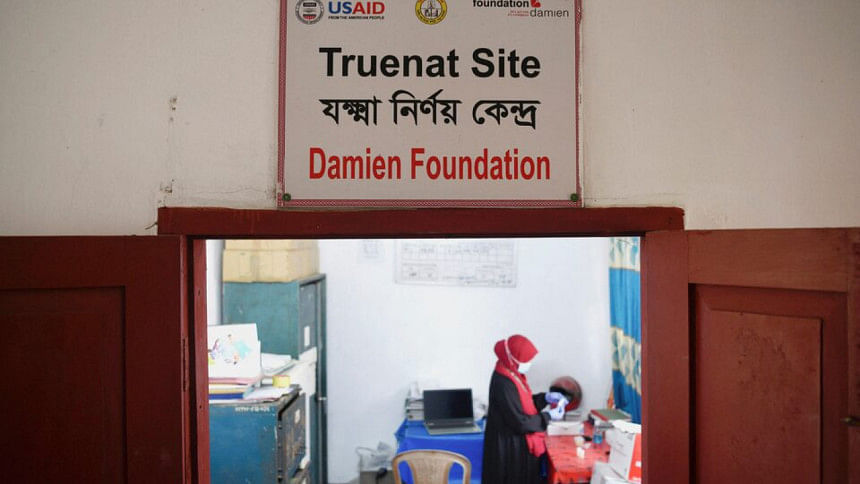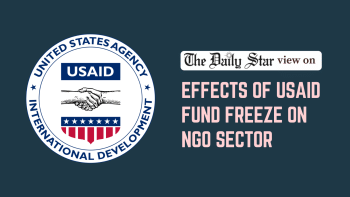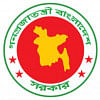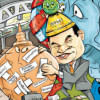USAID fund cuts: Reintegrate the ‘forgotten workforce’

After receiving the redundancy notice from my international non-profit employer in March 2025 due to the USAID fund cut, I applied for more than 20 development jobs and consultancy opportunities aligned with my experience. Surprisingly, I never heard back from any of them. The development professionals in Bangladesh, like me, had a higher mobility within the sector due to our extensive skill sets. But the scenario changed after January 20, 2025, when the US government announced a 90-day review period and paused USAID grants globally. Many USAID projects let go of their staff without any appropriate notice period. We don't know how many there are in Bangladesh, apart from a newspaper report that estimated the number of job losses to be 30,000-40,000 based on the assumptions sector insiders. We, the forgotten workforce in Bangladesh's development sector, have not received any official statement or statistics about the extent of this joblessness.
Regardless, the workforce still needed to make ends meet for themselves and their families. Out of desperation, they aggressively jumped into searching the job boards.
Globally, USAID alone was the source of around 50 percent of development funds. With the cancellation of USAID grants, many development organisations have gone through termination and furlough of direct staff under USAID grants, and some not directly funded by USAID grants.
The development organisations could not provide any solution for the job seekers due to a severe financial crisis. While the corporate and private sector requires specific industry-relevant skill sets and are unaware of how to utilise the abandoned skill sets, where should this forgotten workforce seek support?
With the current climate of foreign aid by donors, it is predictable that the development sector won't be back to its original shape or scale soon. Under these circumstances, the Bangladesh government must take steps to prevent a future disaster in the shrinking development sector. Foreign aid has long played a critical role in various sectors of the country, including education, health, environment, democracy, human rights, humanitarian assistance, and many more. With the priority of the donors shifting globally, the country must focus on building a self-reliant economy supported by the business and private sector.
The Bangladesh Investment Summit 2025 showcased the country's potential as a prime investment destination in Asia. The World Bank signed a $850 million loan to create new jobs and enhance trade in the country. The National Special Economic Zone in Chattogram alone is expected to create jobs for around eight lakh individuals. The latest Bangladesh Country Private Sector Diagnostic (CPSD) report reveals that with the right policy actions, Bangladesh could generate up to 23.7 lakh jobs annually within the construction sector by boosting the development of new housing projects. In addition, expanding the country's domestic production of paint and dye could create over 664,000 formal jobs. Furthermore, reforms in digital financial services might open the door to anywhere between 96,000 and 460,000 new employment opportunities. The government can integrate the high-skill redundant workforce from USAID projects, and utilise our expertise in this transition process for the country's economic growth. This is the time to acknowledge that the job loss of a section of development workers is not a short-term crisis and could affect the country's economic growth in the long run. We should prepare for it with clear course corrections by following new policy pathways.
To mitigate the impact of job losses in the development sector, the government can survey the number of unemployed workforce due to the fund cuts, followed by an economic impact assessment. The government should also implement a national talent retention programme to address the skill gaps in the economy and mitigate the impact of job losses. This initiative will help the development professionals transition into the newly growing sectors like renewable energy, IT, and green manufacturing, wherein there is a demand for a skilled workforce.
Bangladesh's expanding infrastructure and renewable energy sectors present a great opportunity to create jobs and reintegrate the displaced workforce through public-private partnerships (PPPs). As an incentive, the government could offer the private sector grants, tax breaks or subsidies, reduce their regulatory burdens of doing business to encourage them to hire these skilled professionals.
A national reskilling and upskilling initiative could play a critical role in the transition of the displaced workforce. Partnering with key industries, the government could design specialised, subsidised training and mentoring programmes. It should also incentivise entrepreneurship and small business creation by an entrepreneurship support scheme for the displaced workforce. Seed funding, mentorship, and access to markets for new businesses could be offered. Government-supported schemes and accelerators would assist development professionals in setting up businesses in high-growth sectors, including agriculture, e-commerce and information technology, which would also create new jobs.
Wherein a large unemployed workforce created by the fund cuts is facing an immense challenge to survive, this situation presents a unique opportunity for Bangladesh. This is a call to action from the "forgotten workforce" of the development sector of the country to the government to reintegrate them strategically into the economy.
Zinat Ara Afroze is a development professional and Commonwealth scholar.
Views expressed in this article are the author's own.
Follow The Daily Star Opinion on Facebook for the latest opinions, commentaries and analyses by experts and professionals. To contribute your article or letter to The Daily Star Opinion, see our guidelines for submission.

 For all latest news, follow The Daily Star's Google News channel.
For all latest news, follow The Daily Star's Google News channel. 










Comments